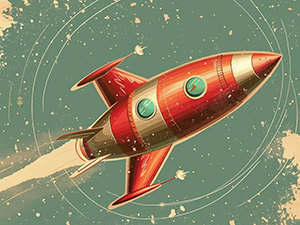Traditional Advertising vs. AI-Powered Advertising
The advertising landscape is evolving rapidly with the introduction of Artificial Intelligence (AI). This article compares traditional advertising methods with AI-powered advertising, highlighting the differences and benefits for small businesses.
Advertising has long been a cornerstone of business growth, but the methods and tools have evolved dramatically. Traditional advertising relies on broad messages delivered through channels like print, radio, and TV, often with limited targeting capabilities. AI-powered advertising introduces data-driven, personalized approaches that enhance effectiveness. Understanding the differences between these two methods can help small businesses choose the best strategies for their needs.
Traditional Advertising
-
Broad Reach
Targets large audiences with general messages.
-
Limited Targeting
Relies on basic demographic information, leading to less precise audience engagement.
-
Higher Costs
Can be expensive due to production and placement fees.
-
Delayed Feedback
Performance metrics are slower to gather and analyze.
-
One-Way Communication
Minimal interaction with the audience.
AI-Powered Advertising
-
Personalization
Delivers tailored messages to individuals based on data analysis.
-
Advanced Targeting
Uses behavioral, psychographic, and contextual data for precise audience segmentation.
-
Cost Efficiency
Optimizes ad spend by focusing on high-potential customers.
-
Real-Time Analytics
Provides immediate performance data for quick adjustments.
-
Interactive Engagement
Enables two-way communication through chatbots and interactive ads.
Benefits of AI-Powered Advertising for Small Businesses
-
Improved ROI
- Efficiency: Reduces wasted ad spend by targeting the most relevant audiences.
- Performance Optimization: Continuously improves campaigns based on real-time data.
-
Enhanced Customer Experience
- Relevance: Personalized ads resonate more with customers.
- Engagement: Interactive elements encourage active participation.
-
Scalability
- Adaptability: Easily scales campaigns up or down based on business needs.
- Automation: Manages multiple campaigns across platforms efficiently.
-
Data-Driven Decisions
- Insights: Provides valuable data on customer behavior and preferences.
- Strategy Development: Informs broader marketing and business strategies.
Challenges of Traditional Advertising
-
Ineffectiveness with Modern Audiences
Today's consumers expect personalized and relevant content.
-
Difficulty Measuring Success
Harder to track and attribute results to specific campaigns.
-
Higher Barriers to Entry
Production and placement costs can be prohibitive for small businesses.
Integrating Both Approaches
-
Complementary Strategies
Combining traditional methods with AI-powered tactics can enhance overall effectiveness.
-
Brand Awareness
Traditional advertising can build brand recognition, while AI-driven campaigns focus on conversion.
-
Audience Reach
Use traditional channels to reach broader audiences and AI tools to engage them deeply.
Conclusion
While traditional advertising has its place, AI-powered advertising offers significant advantages for small businesses seeking to maximize their marketing efforts. The ability to personalize messages, target precisely, and adjust campaigns in real-time leads to better engagement and ROI. Embracing AI in advertising positions small businesses to compete effectively in today's dynamic market.
Interested in transitioning to AI-powered advertising? AdAgency.co provides free tools to help small businesses leverage AI for more effective marketing campaigns.









